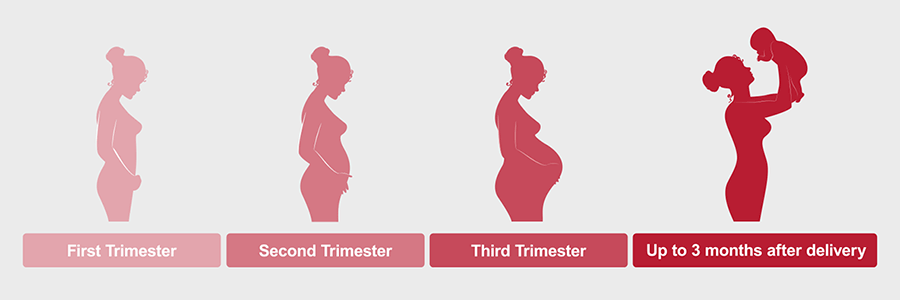How to Draw Baby Blood

![]()
Expecting or recently had a baby?
Don't let a blood clot spoil your joy.
Get the facts about dangerous blood clots.
Blood clots during pregnancy can be dangerous for the expectant mother and the developing baby because they can cut off blood flow to the developing baby.
![]()
A blood clot in the lungs is one of
the most common causes of
pregnancy-related death in the U.S.
![]()
Women are five times more likely
to experience a dangerous blood
clot when they are pregnant.
![]()
Surgical delivery by C-section nearly
doubles a pregnant woman's risk
for a dangerous blood clot.
Blood clots can form in a woman's legs or arms and can break off and travel to the lungs, which can be life threatening.
Factors that increase a woman's risk for blood clots during pregnancy, childbirth, and after delivery
- A previous blood clot, a family history of blood clots, or a genetic blood clotting disorder
- Overweight or obesity
- Smoking
- Delivery by C-section
- Prolonged immobility or decreased activity, such as bed rest, travel, or recovery after delivery
- Pregnancy at age 35 or older
- Certain pregnancy conditions and complications, such as pregnancy with multiple babies or the use of fertility treatments involving the use of hormones
As you prepare for baby, don't forget to take care of yourself.
A woman is at increased risk for a dangerous blood clot throughout her pregnancy, during childbirth, and up to 3 months after her baby is born.

When you take care of yourself, you take care of your developing baby too.
Most blood clots can be prevented. Talk to your doctor, know your risk, and work with your provider to prevent blood clots.
- Talk to your family about your health history and tell your doctor if you or a family member has ever had a blood clot.
- Talk to your doctor about all your potential risks for developing blood clots.
- Work with your doctor to reduce your risk for blood clots, especially if you are on bed rest or had a C-section.
- Exercise as much as your doctor recommends. If you sit for long periods of time, move around or exercise your legs every 1-2 hours.
- Drink plenty of liquids. Recommended that women drink 10 glasses of liquid every day while pregnant, and 12-13 glasses of liquid every day while breastfeeding.
- Take medications and use compression devices as prescribed.
Most blood clots can be treated.
Tell your doctor if you experience any of the symptoms of a blood clot.
SYMPTOMS OF A BLOOD CLOT IN THE ARM OR LEG MAY INCLUDE
![]()
- Swelling
- Pain or tenderness not caused by injury
- Skin that is warm to the touch
- Redness or discoloration of the skin
If you experience any of these signs or symptoms, alert your doctor as soon as possible.
SYMPTOMS OF A BLOOD CLOT IN THE LUNG MAY INCLUDE
![]()
- Difficulty breathing
- Chest pain that worsens with a deep breath or cough
- Coughing up blood
- Faster than normal or irregular heartbeat
Seek immediate medical attention if you experience any of these signs or symptoms.
Source: https://www.cdc.gov/ncbddd/dvt/infographics/blood-clot-pregnancy-info.html
0 Response to "How to Draw Baby Blood"
Post a Comment